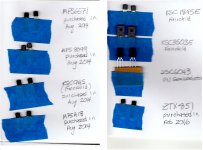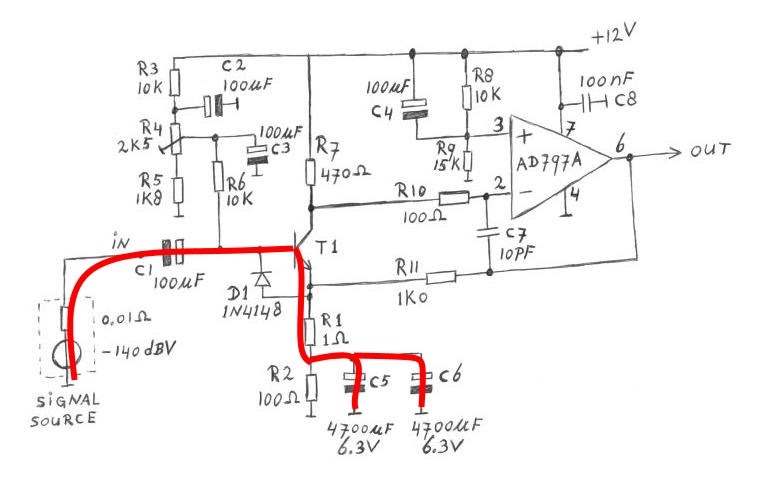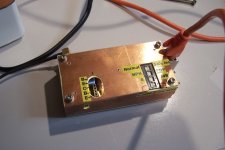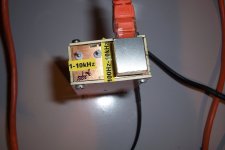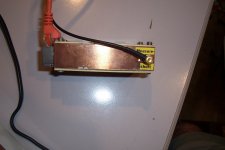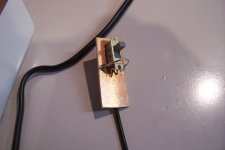OK, I have tested a number of examples of BC327/37, plus a few other similar transistors (and some not so similar too).Hi Elvee,
Sorry for my mistake, I meant to ask BC327 and BC337.
Conditions are always the same, 2mA - 2V
Code:
Type Mfr Prod. year Ree Rbb
BC328 Phil 1979 0.09 258
BC327 Phil 1996 0.06 >650
BC327/16 Phil 2003 0.02 49
BC328/40 MultiC ~2000 0.31 304
BC327 TFK ~1976 <0.01 208
BC327/16 Sie ~1988 0.09 467
BC328 Moto 1991 0.06 178
BC327/16 ST ~1991 0.02 33
BC636G TFK ~1985 <0.01 48
BC640 Phil 1985 <0.01 60
2N5322 ST 1989 <0.01 74
BC337 Phil 1980 0.31 269
BC337/40 Phil 2000 0.10 118
BC338/40 MultiC ~2000 0.34 444
BC537 Fair ~1982 0.09 64
BC639 Phil 1993 0.07 43
2N4401 Moto 1992 0.09 55
BSS38 Phil 1983 1.10 124
KSP42 Fair 2001 0.08 46
MPSA42 Phil 2006 0.13 118
ZTX651 Zet ?? <0.01 80
ZTX851 Zet ?? <0.01 84
ZTX690 Zet ?? <0.01 114
ZTX869 Zet ?? <0.01 200
2N5320 ST 1999 0.08 71What can we draw from these figures? At first sight, values seem to be all over the place.
A first thing to understand is that we do not have to reason in terms of type N°s, or even manufacturer, but in terms of processes: it is perfectly obvious for instance that a BC337 made by Philips in the years 2000 is a completely different beast from the one manufactured in the early eighties: it has vastly improved, with parasitic resistors divided by ~3.
That is indeed a very broad and strong trend for the whole of the industry: more modern processes are almost always an improvement over the previous ones.
There are some rather rare exceptions, like the BC327 made by Philips in 1996 which is a real stinker: it even exceeded the capacity of the instrument.
Probably an isolated production glitch, because in general, the production of Philips is quite consistent.
The semi's from Multicomponent are consistently below the lot, even the modern ones, but since they are cheap as dirt, one might say that you get what you pay for...
Typically, a process cycle seems to last a few years, perhaps 2 to 5 years.
While a process lasts, the production is very consistent, with typical deviations of a few percents, perhaps 10 or 20 maximum.
Then, there is a "switch", and values change completely.
The main driver for these changes is probably economical, streamlining of the production, shrinking the silicon area, but better, more accurate fabrication techniques also improve the characteristics.
That is a sad thing to say, but the semi's in beloved vintage equipment's of the 70's 80's are mostly crap by today's standards....
The list above contains stinkers, but also a few gems: the BC327 from ST is an example of such a gem.
The famed 2N4401 is also among the "good ones", but not the absolute best.
Completely unexpected is the KSP42: seeing a high-voltage transistor as one of the two best is a complete surprise.
Note that I have tested other vintages/makers of 2N4401, and they weren't that good.
The ZTX series is disappointing, but of course they are designed for ultra-low emitter and collector resistances, and not particularly for low Rbb.
Sorry about the missing production dates, but they have no date code, and I don't feel confident enough to guess even an approximate year
OK, you do not need to send more than one sample for each different production batch: as I said, the production is quite consistent, at least for post-70's semi'sIf you PM me your shipping address, I would be glad to send you a few samples of the lowest Rbb transistors that Horowitz and Hill measured, in their 2015 survey of 54 different BJTs (Art of Electronics, 3rd edition, p.501). I'll also toss in a couple of MPS6571s; these are the NPNs that Nelson Pass used in the Threshold M1 moving coil pre-preamp, and that he also used in the Threshold NS10 preamplifier phonostage and line amp stage. Datasheet attached.
_
A reminder of the warning I gave in the introduction: this tester is not a lab instrument, and values have to be taken for what they are: indicative.
That is particularly true for PNP's, for technological reasons, and for "good" transistors, especially the ones having a largish Ree: in this case, the Ree*β term is heavily dominant, and its subtraction from the raw Rbb value maximizes the errors.
Horowitz and Hill report rbb = 1.67 ohms for the ZTX851 while you report 84 ohms, that's rather a large difference.
On the other hand H&H report rbb = 40 ohms for the 2N4401while you report 55 ohms.
On the other hand H&H report rbb = 40 ohms for the 2N4401while you report 55 ohms.
If you PM me your shipping address, I would be glad to send you a few samples of the lowest Rbb transistors that Horowitz and Hill measured, in their 2015 survey of 54 different BJTs (Art of Electronics, 3rd edition, p.501). I'll also toss in a couple of MPS6571s ...
Sent today: 16 samples.
_
_
Attachments
That's worrying: as I don't suppose H & H used heavily simplified measurement methods and gear like I did, my figure is most probably incorrect.Horowitz and Hill report rbb = 1.67 ohms for the ZTX851 while you report 84 ohms, that's rather a large difference.
I probably went one or two simplifications too far.
I'll have to review the possible causes for such an error.
The direction of the error is unexpected: most simplifications and errors should in principle result in a measured value lower than the actual one.
Among the few plausible culprits are the self-heating and the emission factor.
The thread will return on the back-burner for the time I investigate....
It is a known and recognized method for measuring Rbb, but as shown, it is simplified and only gives approximate results, but even the full accuracy method cannot be 100% accurate, because there are excess noise sources unaccounted for.Elvee,
What do you think of this method of measuring Rbb based on the transistor voltage noise? I saw this circuit years ago but had questions because some transistors advertised a low Rbb had high voltage noise.
Of course, all external methods of measurement for this parameter use some kind of approximation.
No, I had hoped for an illumination, but so far I have seen no light.
The ideality and self-heating fixes I added work as intended, but some higher order effects still pollute the measurement, and I have no clue as to which might be dominant: the number of minor deviations mechanisms in semiconductors is overwhelming, and it's one that not taken into account by spice, because in sim, it works perfectly.
This also means that the sim is useless at providing clues.
The ideality and self-heating fixes I added work as intended, but some higher order effects still pollute the measurement, and I have no clue as to which might be dominant: the number of minor deviations mechanisms in semiconductors is overwhelming, and it's one that not taken into account by spice, because in sim, it works perfectly.
This also means that the sim is useless at providing clues.
I use a variant of this method as a sanity check, because although not very accurate, it is reliable and predictable (it provides an upper bound for the resistance value).
For relatively ordinary transistors, it is in good agreement with Horowitz & Hill results, but for the more exotic types, the discrepancies become enormous.
Maybe those transistors have extremely low Rbb and extremely high excess noise, or else.....
For relatively ordinary transistors, it is in good agreement with Horowitz & Hill results, but for the more exotic types, the discrepancies become enormous.
Maybe those transistors have extremely low Rbb and extremely high excess noise, or else.....
Unfortunately, no.
The easiest, reasonably accurate method is the noise-resistance one, and I have a jig for that, but it's no rocket science and various examples can be found on the net
The easiest, reasonably accurate method is the noise-resistance one, and I have a jig for that, but it's no rocket science and various examples can be found on the net
Last edited:
Yes, more or less.
This is the principle:
https://www.diyaudio.com/forums/att...lack-knight-base-spreading-resistance-rbb-pdf
The real thing needs to take in to account some practicalities, like the ability to test both polarities or the usability.
This is the complete tester, with an umbilical-connected supply:
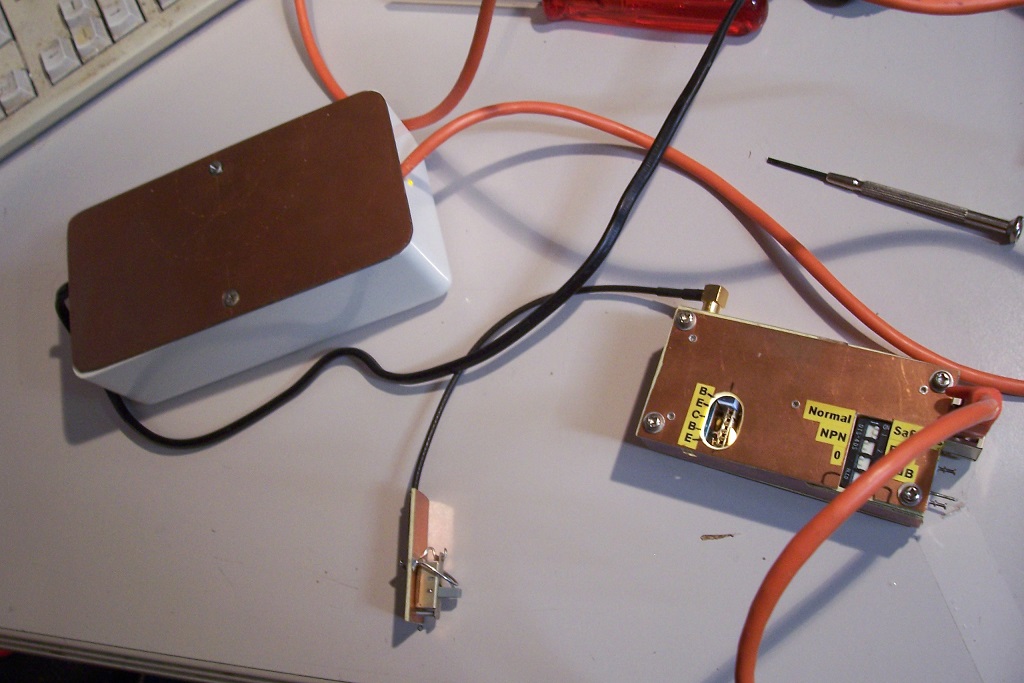
This configuration eliminates hum issues.
4 switches control the configuration. The "safe insert" mode mutes the supplies, discharges all the coupling caps and lights the socket zone:
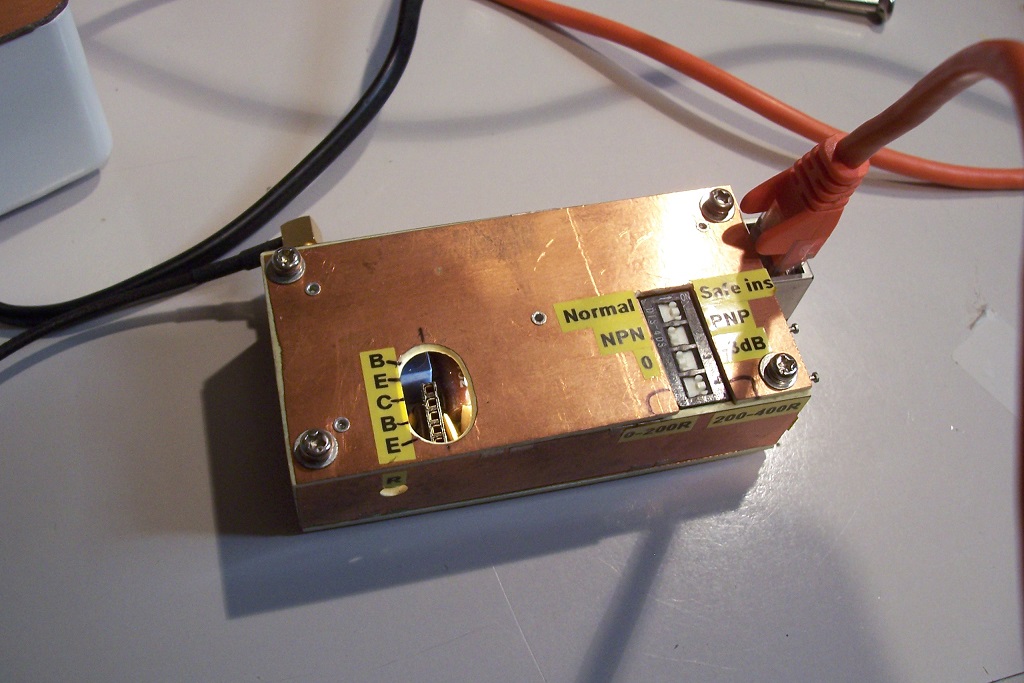
The input resistor is a 20 turn, 220 ohm trimpot:
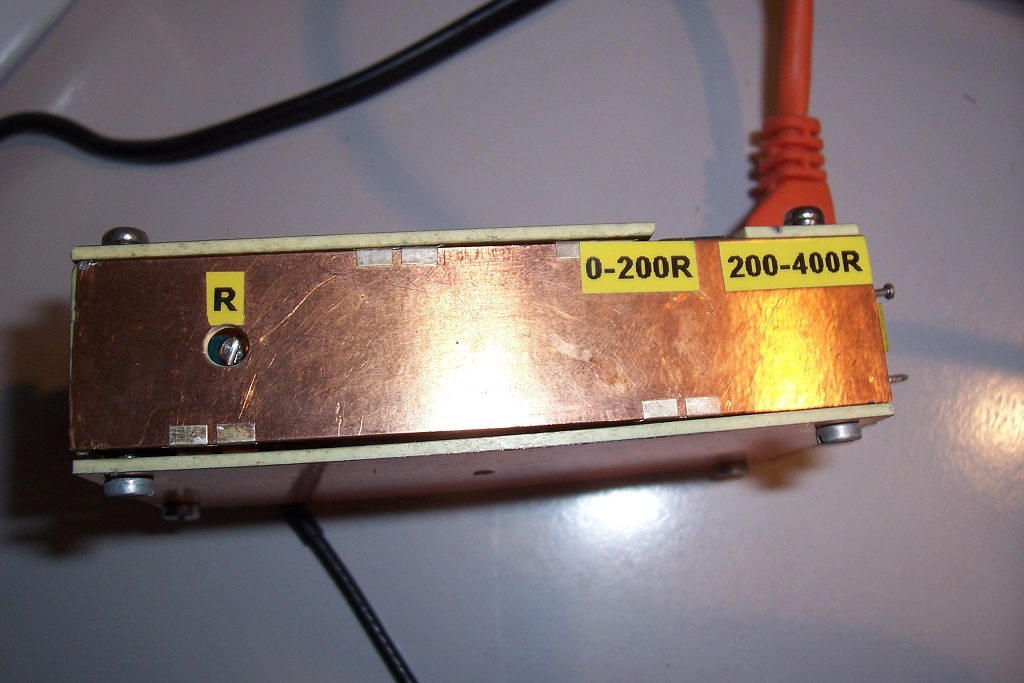
Two outputs are available, but further filtering is normally necessary:
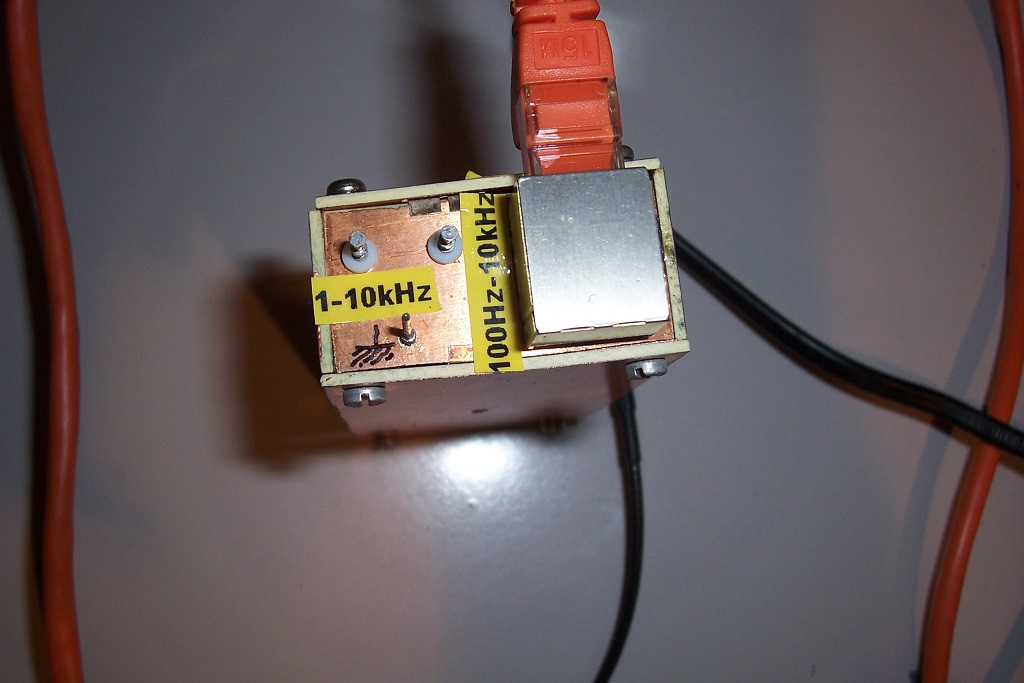
A connector gives access to the resistor value:
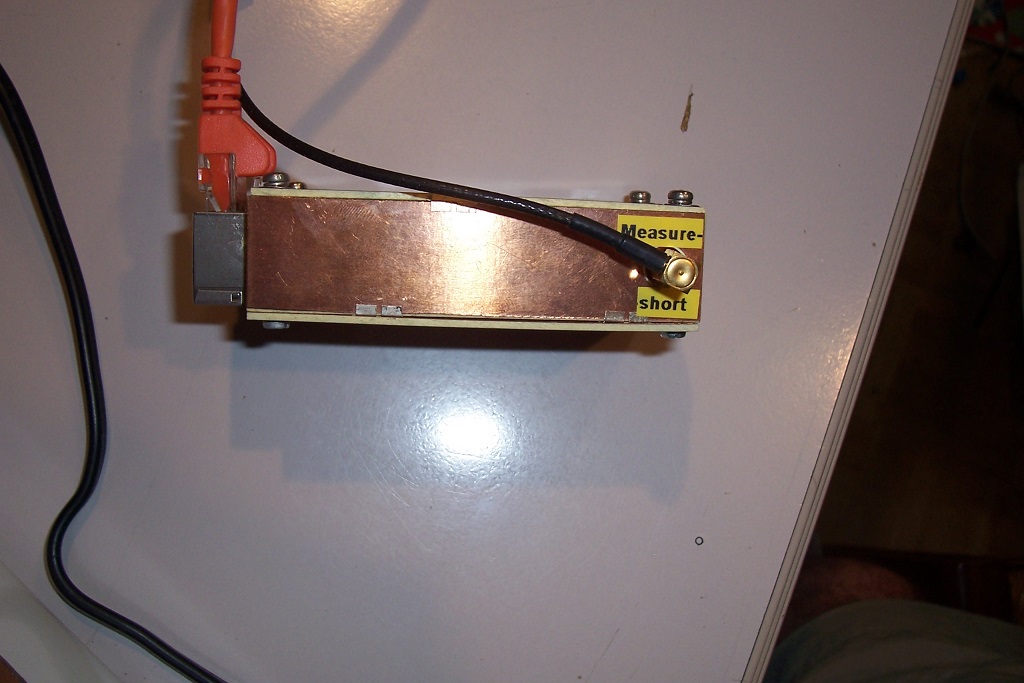
The switch shorts the resistor:
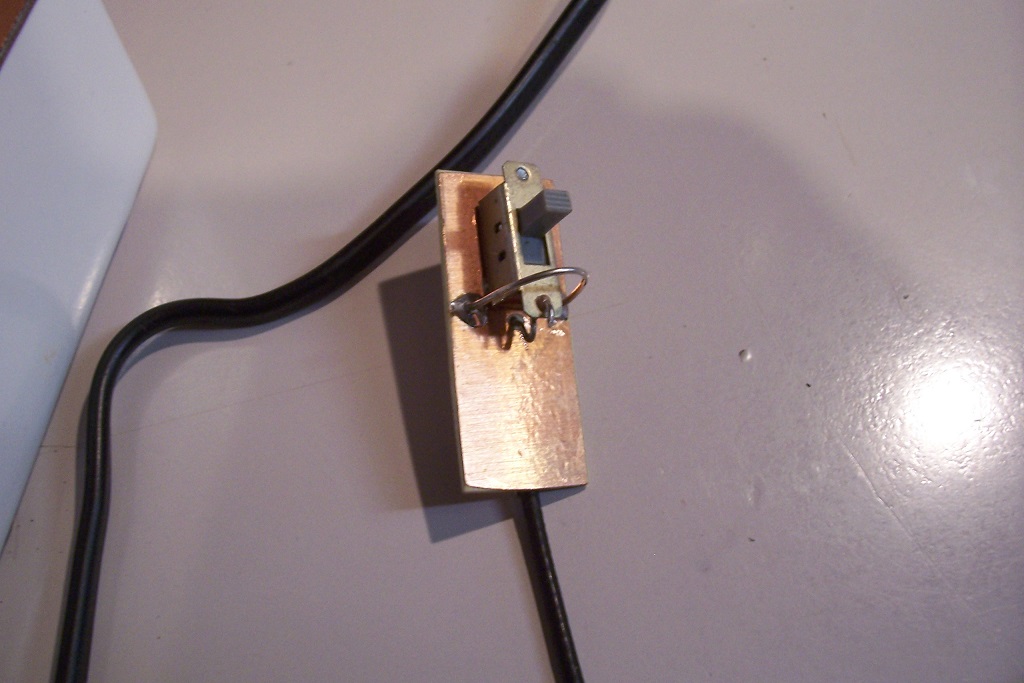
Everything is carefully shielded, of course
This is the principle:
https://www.diyaudio.com/forums/att...lack-knight-base-spreading-resistance-rbb-pdf
The real thing needs to take in to account some practicalities, like the ability to test both polarities or the usability.
This is the complete tester, with an umbilical-connected supply:
This configuration eliminates hum issues.
4 switches control the configuration. The "safe insert" mode mutes the supplies, discharges all the coupling caps and lights the socket zone:
The input resistor is a 20 turn, 220 ohm trimpot:
Two outputs are available, but further filtering is normally necessary:
A connector gives access to the resistor value:
The switch shorts the resistor:
Everything is carefully shielded, of course
Attachments
- Home
- Amplifiers
- Solid State
- An (almost) Automatic Rbb Extractor: the Black Knight
